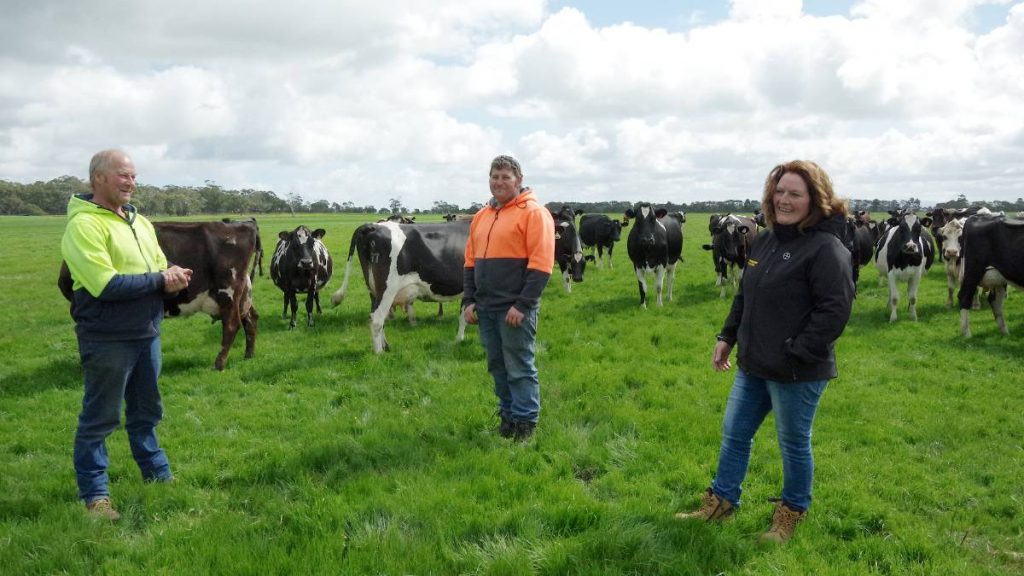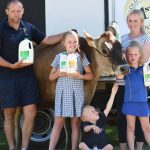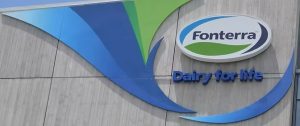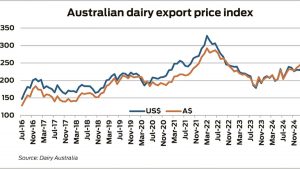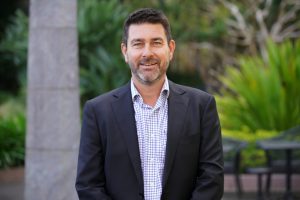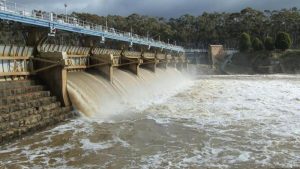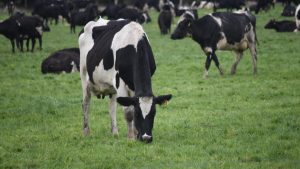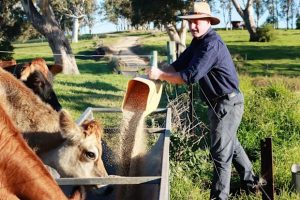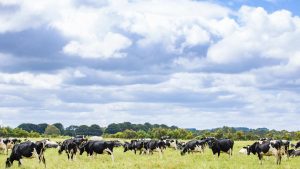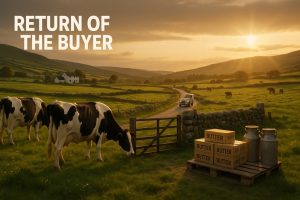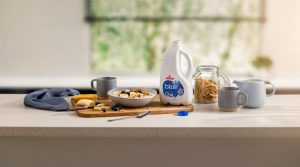
In 2016, Clare and Trevor Porter entered into a four-way partnership with their sons, Jono and Terry, to buy a second dairy farm, the 65-hectare Nioka Ridge, at Yarram, Victoria. It is next door to 65ha owned by Trevor and Clare; which now spreads the Nioka Ridge herd across 130ha.
The milking herd is a nucleus of 60 cows provided out of the home-farm herd and is now bred up to 130 milkers; with 64 heifers coming into the herd in the next two seasons.
The herd is a commercial composite of Friesian, Jersey, Brown Swiss, Red, Guernsey and Normande cows. Annual production is 40,000 kilograms milk solids.
Calving is three times a year; joining is over four weeks in August, December and April.
“Our calving pattern results in a curved milk rate, rather than peaks and troughs, which suits our business model,” Clare said.
“We calve using the summer crops and pasture; and we also have the option of joining beef bulls to the cows.”
The partnership agreement resolves each individual’s contribution by paying a set rate for milking and an hourly rate for other tasks on the farm. All calves are the property of the partnership.
Terry is the full-time employee, Clare is part-time and Jono (employed elsewhere as a fitter and turner) milks and works on the farm on weekends.
“This arrangement gives the boys a say in decision making,” Clare said.
“We challenge them on their ideas, but that’s so they justify their forward planning. Then we tend to agree.”
Initial investment saw the partnership upgrade from an eight swing-over single pulsation herringbone to a nine double-up and install an automatic feeding system and automatic cup removers, all second-hand equipment.
They put rubber matting on the floor of the dairy, for cow and human comfort. Jono Porter built new gates for the herringbone platform, with counter weights to assist with lifting.
There are two bores on the farm. A stock and domestic bore is used to wash down the dairy shed and reticulates drinking water into paddock troughs throughout the farm.
A second bore is used to irrigate paddocks out of a holding dam, up until recently using lateral sprays and baffles. The partners had planned to install a travelling irrigator in two years time, but brought it forward to 2019 for a number of reasons.
Irrigation will come from the second bore on the property, pumped initially into a dam from where the water will be pumped into the travelling irrigator for spraying pasture and crops.
“Last year [in the dry, hot summer] we spent a lot of time moving laterals around the paddocks. It was all manual work and every day we’d be getting home at midnight,” Clare said. “We had no quality of life.”
The seven-span, 400-metre long, centre-line pivot, with an end gun, will irrigate 56ha of the farm, a mix of pastures and crops. It is managed with an automatic system to turn off the sprinklers and the diesel pump.
There have had to be some changes made to fences, with barbed wire and steel strands replaced by single or double strands of hot wire and pivot fence springs to facilitate passage of the pivot across the wires without snapping them or putting pressure on the fence posts.
We challenge them on their ideas, but that’s so they justify their forward planning. Then we tend to agree.
– Clare Porter
While 16ha of the farm was annually renovated, sowing annuals, Clare estimated this will now double.
Owning their own equipment, the Porter family do all cultivation, sowing and harvesting work themselves.
The farm needs to produce at least 350 round bales of silage and hay to support cow production each year.
“We expect the pivot will help us grow a consistent supply of milking pasture and conservable feed, and substantially increase milk production,” Clare said.
“We’ll sow a multi-species summer crop of millet, sorghum, plantain, oats, chicory, rape and forage radish, with some clovers.
“We’re growing oats for silage and hay.
“Then we’ll follow with annual ryegrass and ryecorn, which has shown itself to work well in our grazing system.
“Investing in the pivot frees up personal and work time and there’s less wear and tear on the motorbike, lateral spray equipment, people and pasture because we’re not having to manually lay out and move irrigation equipment.
“We don’t have to pull the laterals out every time the paddocks are renovated or topped.
“And there’ll be no more laterals run over by the fertiliser truck.”
They are using piping from the old lateral system to install more drinking troughs in the paddocks for the cows to access.
This year they also applied gibberellic acid to pastures which, alongside the irrigator, gave them a feed wedge boost during August, when it is usually most needed.
“We’re farming smarter to put the lifestyle back into it,” Clare Porter said.
